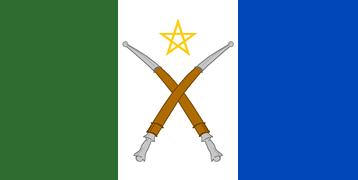
The State of Afar

The State of Afar consists of 5 administrative zones, 29 woredas and 28 towns. The rural area has 326 farmers associations, while the urban part has 32 kebeles. Afar is the origin of human species, where a 4.4 million years old humanoid is recently discovered.
CAPITAL CITY
The capital city of the state of Afar is Aysaita.
LOCATION
Afar is located in the eastern part of Ethiopia. The region has common boundaries with the State of Eritrea in the north-east, with Tigray in the north-west, with Amhara in the south-west, with Oromia in the south, with the State of Somalia in the south-east and with the Republic of Djibouti in the east.
AREA
The State of Afar has got an estimated area of 270,000 square kilometres.
POPULATION
According to the census, the population of the state of Afar as of 22nd July 1996 was 1,106,383 of which 626,839 were males and according to the 1994 census, is estimated at 1,106,383 of which 626,839 are males and 479,544 are females. Rural population is about 1,020,504 (92.2%), while the urban population is counted at 85,879.
The major ethnic compositions are Afar 91.8%, Amhara 4.5%, Argoba 0.92%, Tigraway 0.82%,Oromo 0.7%, Wolaita 0. 45%, and Hadiya 0.013%.
Regarding religion 96% of the population are Muslim, 3.86% Orthodox Christians, 0.43% Protestants, 0.09% Catholics and others constitute 0.02%.
The Afarigna language is predominantly (90.8%) spoken in the region. It is also the working language of the state. Other major languages spoken in the state includes Amharic 6.68%, Tigrigna 0.74%, Oromifa 0.68%, Argobigna 0.4% and Wolaitigna 0.26%.
MAJOR ECONOMIC ACTIVITIES
90% the states of population is leading a pastoral life by rearing camels, cattle, goats, sheep and donkeys. Agriculture such as production of maize, beans, sorghum, papaya, banana, and orange is also practiced. Cotton production is also typical to the region. Commerce, especially of salt, is another area of occupation.
TOPOGRAPHY AND CLIMATE
The state is found in the rift valley. Most of the region is flat land. The altitude of the region ranges from 116 meter below sea level (where one of the highest temperature [500C] on earth has been recorded) to 1600 meters above sea level. The lowland areas of Afar are generally below 1600 meters above sea level. The highest peak, mount Mussa-Alle is just 2063 meters above sea level. The temperature of Afar varies from 25°C during the rainy season (September-March) to 48°C during the dry season (March-September). The average annual rainfall registered for 11 years at Dubti station was 187.9mm.
RIVERS AND LAKES
The Awash river, Mille and Logia which are tributaries of the Awash river traverse the region. Abbe Bil, Afambo and Adebel lakes which are connected to the last section of the river Awash, are found in the region. They form an important habitat for river and lake Fauna.
MINERALS
Salt, Potash, Sulfur, Manganese, Bentonite, Aluminium, Marble, Gypsum and Petroleum are possible major resources of the region.
Tendaho geothermal energy is the most promising power source for electricity. The state has also a plausible source for solar energy.
TOURISM AND HERITAGE
Awash natural reserve, Yagundu-Ras national park and the Dallol depression are expressions of Ethiopia's desert beauty. Some of the attractions of this game reserve include Abyssinian wild ass, Grevy's zebra, beisa oryx, crocodiles, lions, grater kudu, wild (bat eared) fox, wild cat, cheetah, Grant's gazelle, and warthog.
Besides, Hadar, where a 4.4 million years old humanoid is recently discovered is found in this state.
INVESTMENT
Eighty-one
private investors of which 60 are active, have been given licenses in areas of
agriculture, construction, small scale industry and services. The total amount
of investment is Birr 551.2 million. 305,947 persons will benefit from the
regular and temporary employment opportunity created by these investment
projects.